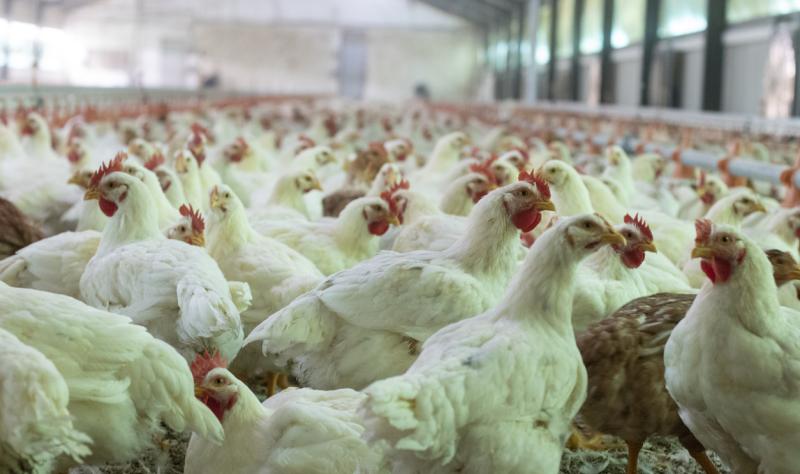Avian flu surge continues on US poultry farms as feds address contamination of raw pet food – University of Minnesota Twin Cities

Wirestock / iStockOver the past few days, the US Department of Agriculture (USDA) confirmed more H5N1 avian flu outbreaks in poultry from eight states, including the first at a commercial farm in Georgia.Meanwhile, the Food and Drug Administration (FDA) and the USDA on January 17 announced new steps to step up the safety of raw pet food, following recent reports of H5N1 infections in household cats.The latest poultry outbreak confirmation from the USDA’s Animal and Plant Health Inspection Service (APHIS) includes a detection in Georgia at a broiler farm that houses 45,500 birds in Elbert County, located in the northeastern part of the state.State Agriculture Commissioner Tyler Harper said the outbreak marks the first at a Georgia commercial farm since the H5N1 virus first started circulating in US poultry in 2022. “This is a serious threat to Georgia’s #1 industry and the livelihoods of thousands of Georgians who make their living in our state’s poultry industry,” he said in a January 17 statement. “We are working around the clock to mitigate any further spread of the disease and ensure that normal poultry activities in Georgia can resume as quickly as possible.”As part of its response, Georgia officials on the same day announced a ban on poultry exhibits, which include sales of live birds at markets and other gatherings featuring live birds.We are working around the clock to mitigate any further spread of the disease and ensure that normal poultry activities in Georgia can resume as quickly as possible.APHIS confirmed more H5N1 detections in other states, mostly involving commercial farms. They include turkey and egg-laying farms in Indiana, a duck meat farm in New York, layer poultry flocks in Ohio, a layer farm in California, a broiler farm in Maryland, and a turkey farm in Minnesota.Also, APHIS confirmed a detection in a backyard flock housing 30 birds in Greene County, Tennessee.Since the first detection in US poultry in early 2022, H5N1 outbreaks have now led to the loss of a record 138.7 million birds across 50 states and Puerto Rico.Meanwhile, APHIS confirmed one more H5N1 detection in a dairy herd, another from California, raising the national total to 929 and California’s total to 712. The FDA on January 17 said it is tracking cases of H5N1 in domestic and wild cats in California, Colorado, Oregon, and Washington state that are linked to eating contaminated food products.It noted that scientific findings are evolving, but current evidence suggests that H5N1 can be transmitted to cats and dogs when they eat products from infected poultry or cattle, such as unpasteurized milk, uncooked meat, and unpasteurized eggs.In its statement, the FDA said pet food manufacturers that are covered by the FDA’s Food Safety Modernization Act Preventive Control for Animal Food (PCAF) rule and use uncooked meat, milk, or egg ingredients must reanalyze their food safety plans to include H5N1 as a known or foreseeable hazard.In a related development, APHIS on January 17 announced that it is updating its policy for preslaughter surveillance in turkeys, which will enhance testing in flocks in affected states. The agency added that in late December it learned about a genetic link between turkeys potentially infected with H5N1, the virus detected in raw pet food, and an infected house cat.Enhanced surveillance will include isolation, clinical monitoring, and testing 72 hours prior to slaughter. APHIS said it will pilot the program, starting with farms that have 500 or more turkey in Minnesota and South Dakota. Both of the states had infected cats and have been affected by outbreaks on turkey farms. The latest confirmation likely reflects follow-up testing of a San Francisco child whose exposure to the virus is still under investigation.Experts fear the move could undercut US and global efforts to monitor and respond to infectious disease outbreaks.Tests results are pending for additional commercial raw pet food samples.Hospitalization rates are on an upward trend for all 3 viruses, with the highest levels for flu.Shoring up pet food safety plans to account for H5N1 and enhanced preslaughter turkey flock surveillance comes in the wake of raw products linked to cat infections.As sporadic H9N2 infections continue in China, rarer H10N3 infections in the past few years now total 4.Outpatient visits for flu are trending down, but the CDC said this is not likely an indication that the flu season has peaked. The Trump administration has placed a pause on all external health communications from federal health agencies, including the CDC and FDA, according to media reports.Myalgic encephalomyelitis/chronic fatigue syndrome, which can be triggered by infection, causes severe fatigue for at least 6 months and can produce other symptoms.Federal officials also touch on the hand-off to the Trump administration, as tests confirm avian flu in several more poultry flocks and at a Chicago zoo.Help make CIDRAP’s vital work possibleCIDRAP – Center for Infectious Disease Research & PolicyResearch and Innovation Office, University of Minnesota, Minneapolis, MNEmail us© 2024 Regents of the University of Minnesota. All rights Reserved.The University of Minnesota is an equal opportunity educator and employerResearch and Innovation Office | Contact U of M | Privacy PolicyNewsletter subscribe






